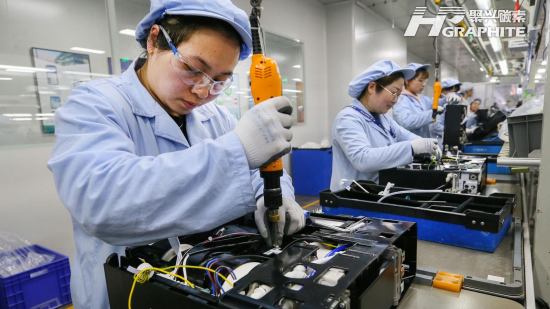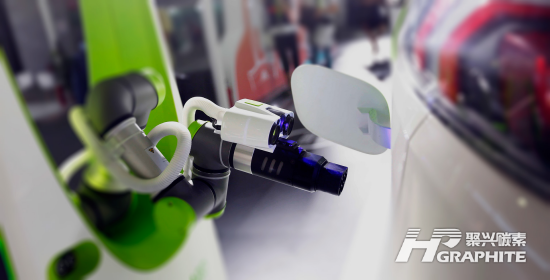【Lithium Battery Industry】Trapped in a Price War! 65 Lithium Companies See Profit Decline ...

Graphite electrodes are vital consumables in EAF steelmaking, mainly used for arc heating. With superior electrical conductivity and high-temperature resistance, they are key to improving both the output and quality of EAF steel.
【Lithium Battery Industry】Trapped in a Price War! 65 Lithium Companies See Profit Decline, Operating Rates Below 30%
The lithium battery industry is undergoing a deep adjustment phase, shifting from "capacity expansion competition" to "price competition." Under the dual pressure of overcapacity and falling prices, many companies in the industry are facing survival challenges.

A representative from a lithium battery materials factory in Central China stated that the current operating rate is below 30%, and companies are merely striving to cover basic operating costs. This situation stems from the overinvestment in lithium battery projects during the rapid growth of the new energy vehicle market in previous years.
Now, with previously planned capacity gradually being released and market growth beginning to slow, the supply-demand landscape has fundamentally changed. Among 104 listed companies in the lithium battery sector, 65 saw a decline in net profit last year, and more than 60 saw a year-on-year drop in gross margin. Prices throughout the supply chain continue to bottom out, approaching cost levels, and low-price competition has become the main manifestation of internal industry pressure.
Accelerated Capacity Reduction
In response to the current situation, multiple associations have recently issued proposals urging companies to “resist internal competition.” The China Battery Industry Association and the China Plastics Processing Industry Association jointly released a proposal advocating for a shift in competition focus from "price wars" to "quality and innovation." This initiative has been widely supported across the industry, signaling the formation of a broad consensus.
To address the short-term supply-demand imbalance, accelerating supply-side reforms and promoting capacity reduction are seen as the most direct solutions. The Power Battery Application Branch of the China Chemical and Physical Power Industry Association previously issued a proposal to establish a mechanism for the orderly elimination of outdated capacity and to optimize the layout of high-quality production capacity. This aims to use market regulation to guide the exit of inefficient and outdated capacity.
Positive signs indicate a cautious approach to capacity expansion. Sunwoda has decided to cancel two power battery projects with a total investment of RMB 14 billion. Other cross-sector companies, such as Jinpu Titanium, CNNC Huayuan Titanium Dioxide, and PRET, have also halted earlier planned lithium battery projects. PRET, for example, canceled its Liuyang, Hunan project, which involved an investment of about RMB 10.2 billion. These actions reflect a rational response to changes in the market environment.
Local industrial investment platforms are becoming increasingly prudent in entering the lithium battery industry, conducting comprehensive market research and detailed input-output evaluations before investing. Government guidance is also playing a critical role, with screening and differentiation taking place at the project approval stage to curb potential overcapacity from the source.
Technological Innovation Leads Value-Based Competition
While capacity reduction is a passive response to market pressure, technological innovation offers companies ample room for proactive development. In recent years, several industry leaders have spoken out against internal competition, calling for a return to the essence of technological innovation. Robin Zeng, Chairman of CATL, publicly stated that the company does not engage in price competition but rather focuses on value-based competition. He emphasized that the industry should compete on innovation and the long-term value that technology can deliver.
Liu Jincheng, Chairman of EVE Energy, also stressed the need for the lithium battery industry to return to its core capabilities—improving technology and quality.
A representative from BYD Group echoed the same view, stating that technological innovation is the key to resolving internal competition. These statements reflect the determination of leading companies to stick to a technology-driven development model.

Technological iteration can create a dimensional advantage over competitors in terms of product cost-effectiveness. Market feedback shows that products with leading technical indicators tend to have stronger pricing power and higher gross margins. Major battery manufacturers are racing to create star products through innovations in technology, processes, or structural design, building competitive "moats" for the market.
CATL continues to launch new battery series, including Shenxing, Qilin, and Xiaoyao, which have been well received by the market. The company expects the shipment share of these products in LFP and NCM categories to rise from 30–40% last year to 60–70% by 2025.
EVE Energy is focusing on the large cylindrical cell route. Its 46-series large cylindrical batteries began mass production and vehicle installation in 2023. By mid-February 2025, over 31,300 vehicles had been equipped with them.
Gotion High-Tech's G-Yuan quasi-solid-state battery, with an energy density of 300 Wh/kg, has pushed electric vehicle range beyond 1,000 km, breaking the industry bottleneck of balancing range and safety.
Feel free to contact us anytime for more information about the Lithium Battery Industry market. Our team is dedicated to providing you with in-depth insights and customized assistance based on your needs. Whether you have questions about product specifications, market trends, or pricing, we are here to help.
No related results found








0 Replies